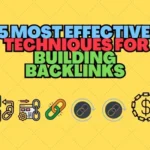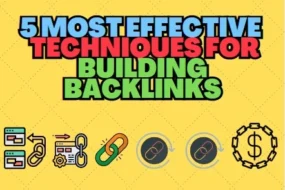
In this blog, I will define Web 3.0 and explain how it differs from Web 2.0. I’ll also go through its advantages briefly. To have a better understanding of Web 3.0 and what distinguishes it from the Internet we know and use,
First, we must examine Web 1.0 and Web 2.0. Web 1.0 is known as the Static Web. Web 1.0 was the first internet, and it provided access to limited information. In the 1990s, websites were established with static HTML pages, which just showed information and allowed visitors to alter the material.
As a result, there was no user engagement, and the early internet was more like a one-way street, with only a few people creating content and information coming from directories. Web pages were created for information consumption and provided by costly servers.
Web 2.0 altered in the late 1990s, when improvements in web technologies such as HTML5 and JavaScript made the internet substantially more interactive. The three fundamental components that contributed to the emergence of this new Web were mobile, social, and cloud.
Web 2.0, often known as the Social Web, permitted the creation of interactive platforms such as Facebook and YouTube. This enabled user-generated content and the distribution and sharing of data between platforms and apps.
What Is Web 3.0?
Despite the fact that the present internet generation has significantly changed things, it has negatives such as centralization, spying, and exploitative advertising. This is where Web 3.0 comes into play. The third generation of the internet is intended to be open, intelligent, and decentralised.
As a result, it is also known as the Decentralized Web, because data will be integrated in a decentralised manner. Distributed ledger technology, the most common of which is the blockchain, will power Internet apps and services. AI and machine-learning algorithms will also play an important role. The goal is to leverage them to give end consumers with quicker, more relevant data. As a result, Web 3.0 is also known as the Semantic Web. Websites that employ AI should be able to sift available data and present the user with the information that it deems acceptable.
The goal is for AI to enable machines to comprehend the meaning underlying the data, or their semantics, and hence provide far smarter user experiences.
Advantages of Web 3.0
The initial steps toward Web 3.0 have already been done, with many developers and internet users focusing on decentralised infrastructures and application platforms.
Web 3.0 will have no single point of control, displacing centralised tech behemoths and allowing individuals to reclaim ownership of personal data.
Decentralization and blockchain technology will thereby alter how data is utilised and sold, with the person in control.
Increased availability and interconnection of information. Because Web 3.0 is decentralised, greater data sets will be available, which implies more information for algorithms to examine.
This will enable consumers obtain more accurate information that is tailored to their personal requirements.
Improved browsing performance. The advancements we’ve witnessed in recent years have improved search engines’ ability to provide relevant results.
Some of the technologies employed, however, such as social tagging systems, can still be abused.AI should be able to filter even distorted results and give consumers with impartial facts using Web 3.0 and better algorithms.
Web 3.0 will provide a customised online experience by incorporating semantics into the Web and allowing machines to decipher meaning through data analysis.Web 3.0, for example, can improve advertising by utilising smarter AI systems and providing people with adverts that are helpful and relevant to their requirements.
Conclusions
The internet has been dominated by large organisations and centralised repositories, leaving people with little influence. Web 3.0 intends to alter that by empowering the person. Its decentralised protocols will allow users to connect to a new internet generation in which they will not only own their data, but will also be able to choose who benefits from their time and information.







